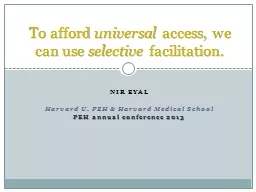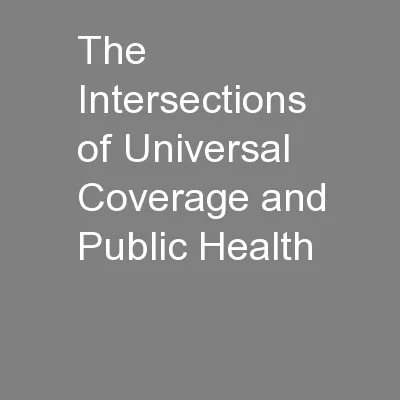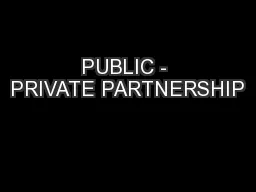PPT-Public-Private Partnership For Universal Health Coverage
Author : phoebe-click | Published Date : 2018-11-03
Middle East and North Africa Health Policy Forum Regional Conference 1213 November 2017 Regulation of PublicPrivate Partnerships to Advance Towards Universal Health
Presentation Embed Code
Download Presentation
Download Presentation The PPT/PDF document "Public-Private Partnership For Universal..." is the property of its rightful owner. Permission is granted to download and print the materials on this website for personal, non-commercial use only, and to display it on your personal computer provided you do not modify the materials and that you retain all copyright notices contained in the materials. By downloading content from our website, you accept the terms of this agreement.
Public-Private Partnership For Universal Health Coverage: Transcript
Download Rules Of Document
"Public-Private Partnership For Universal Health Coverage"The content belongs to its owner. You may download and print it for personal use, without modification, and keep all copyright notices. By downloading, you agree to these terms.
Related Documents














